Text
That is a fascinating family history. I've never heard of the Tuscarora; are they known by any other name? It goes to show how well so much of Native history has been erased, and not by accident either!
One of the things in that video I liveblogged the other day that I've haven't gotten to research yet is the laws about firearms on Sunday in South Carolina. Apparently, men were required to bring firearms to church with them owing to the fear that enslaved people would use their one day of rest to revolt, and that White worshipers of an allegedly loving God needed to be prepared to protect themselves if they were attacked at church!
Super peaceful and normal and not at all cagey people, am i right?
If this is the case, then what throws the worshipers at Pembroke church for a loop is not a lack of expecting violence--or inflicting it considering the happenings at Fort Wilderness--but that it is coming from other White people.
From the same article I posted earlier:
"In March 1782, after Indian attacks upon American settlements on the western frontier, militiamen under the command of Col. David Williamson attacked the Moravian Christian Mission at Gnadenhutten. Peaceful Delaware Indians, who had converted to Christianity, were rounded up, and ninety-six Delaware Indians, men, women, and children, were bludgeoned to death.[18] This shattered the Delaware-American alliance in the Ohio Country."
Every historian commenting on The Patriot's church burning scene: "This is more like the Nazis in World War II!"
No no no no no. This is "more like" occurrences much closer in time and distance than that.
#the patriot#white on white violence?#in the slavery and genocide colony?#it's more likely than you think!
6 notes
·
View notes
Text
The devastating difference between how much time it takes to write something vs how fast people read it lol
22K notes
·
View notes
Text
Genuinely 90% of historical fiction would be so much better if more writers could get more comfortable with the fact that to create a good story set in a different time period you do actually have to give the characters beliefs & values which reflect that time period
32K notes
·
View notes
Text
Made the worst brownies ever created just now
48K notes
·
View notes
Text
From the same article I posted earlier:
"In March 1782, after Indian attacks upon American settlements on the western frontier, militiamen under the command of Col. David Williamson attacked the Moravian Christian Mission at Gnadenhutten. Peaceful Delaware Indians, who had converted to Christianity, were rounded up, and ninety-six Delaware Indians, men, women, and children, were bludgeoned to death.[18] This shattered the Delaware-American alliance in the Ohio Country."
Every historian commenting on The Patriot's church burning scene: "This is more like the Nazis in World War II!"
No no no no no. This is "more like" occurrences much closer in time and distance than that.
#american revolution#native american history#anti-native violence#the patriot#historical patriots did way too much tavington-type shit to native peoples#for ya'll to pretend atrocities against noncombatants hadn't been invented yet
6 notes
·
View notes
Text
"The western focus was not upon a war of independence from Great Britain as much as a war for the opportunity to gain land. Many land speculators, Washington among them, had their sights set on land in the Ohio Valley since the French and Indian War. Land companies were formed and much had been invested in land to the west. However, with the establishment of the Royal Proclamation of 1763, these new lands were out of reach for American colonists so long as Great Britain controlled them."
"Tell me about Ohio" indeed!
#american revolution#those greedy bastards slavering over the ohio valley#william tavington#and . . . george washington?#royal proclamation of 1763#also granted land to officers who fought in the French and Indian War#including 3000 acres to captains#idk who that could possibly be relevant to in this movie though
2 notes
·
View notes
Text




Jason Isaacs in 'Rio, I Love You' (2014)
#jason isaacs#i'm too lazy to copy tags but#OPs tags are truly the stuff of legend#i believe every word#but if they were only going to use jason for three minutes#at least they used him as a fucked up slut#i won't fault them for it#fuck them up babe
69 notes
·
View notes
Text
#biological warfare cornwallis#anti vaxxer washington#wow the past really IS never far from us#american revolution#american history
0 notes
Text
Hundreds of Jewish anti-war demonstrators have been arrested during a Passover seder that doubled as a protest in New York, as they shut down a major thoroughfare to pray for a ceasefire and urge the Senate majority leader, Chuck Schumer, to end US military aid to Israel.
The 300 or so arrests took place on Tuesday night at Grand Army Plaza, on the doorstep of Schumer’s Brooklyn residence, where thousands of mostly Jewish New Yorkers gathered for the seder, a ritual that marked the second night of the holiday celebrated as a festival of freedom by Jews worldwide.
The seder came just before the US Senate resoundingly passed a military package that includes $26bn for Israel.
21K notes
·
View notes
Text

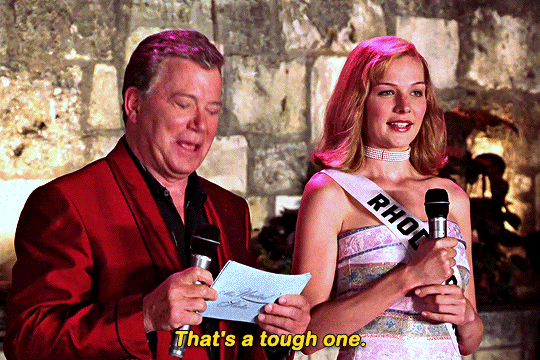
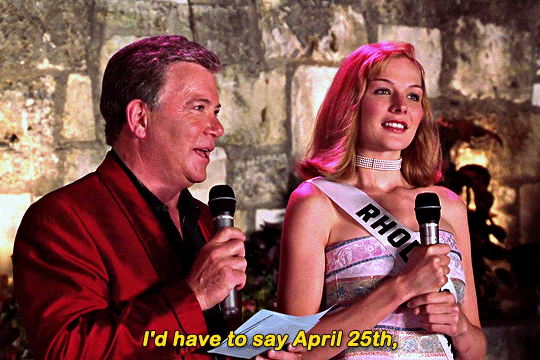

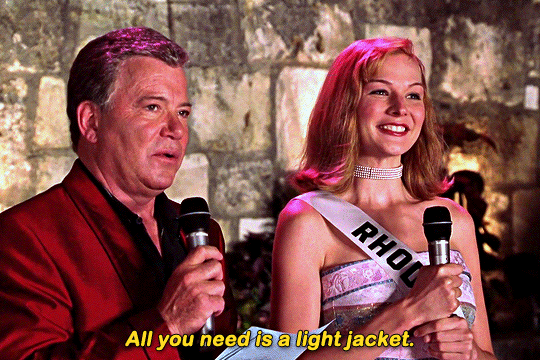
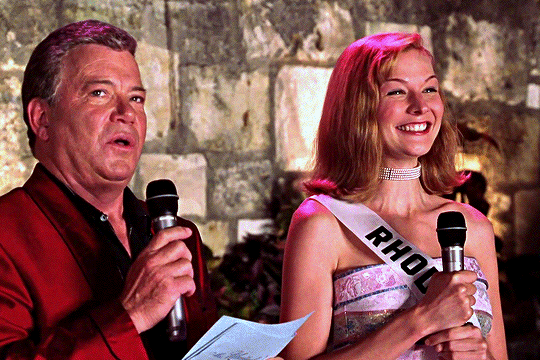

Miss Congeniality (2000) dir. Donald Petrie
10K notes
·
View notes
Text


these are the same pictures.
any objections will be rejected.
70 notes
·
View notes
Text

100% historically accurate statue of William Wallace that used to be on display at the National Wallace monument at Stirling in Scotland. The statue was removed in 2021 because people complained it looked like the William Wallace portrayed in Braveheart by Mel Gibson. Me, I personally don't see any resemblance.
519 notes
·
View notes
Text


At last, the superhero I've been waiting for!
20 notes
·
View notes
Text
I love that people didn’t want Heath Ledger to be the joker cus he had gay cowboy sex. Do you seriously think the joker WOULDNT have gay cowboy sex? In this society???
154 notes
·
View notes
Text
Of all the historical perspectives erased from The Patriot--and there are so, so many--the one I most wish had been included is the backwoods Loyalist. Instead of that long-ass montage of Patriot militiamen shooting British officers like fish in a barrel, they could have been in contention with a force that knew them and also knew the South Carolina backcountry ("Really, Benjamin? The old Spanish mission? Could you be any more obvious?").
Also, I'm pretty sure if Tavington had had some burly rustic Loyalist militia officer to tell him he had pretty eyes and pull his hair and fuck him in the moonlight on the banks of the Santee, the final battle would have gone very differently.
"What is the militia doing? Even for them, that is bizarre behaviour." "Oh, was it The Ghost? I didn't notice. I was thinking about how rough Captain Flynn's hands are."
#the patriot#and no british officers died that day#although bordon wanted to after hearing all about tavington's sex life unprompted#william tavington
5 notes
·
View notes
Note
What are 5 things that make you happy? After you answer, pass the question to the last 10 people who rebloged your post. Let's spread positivity 🌻
Queer villains
Learning new facts about history
Affogato
Red wine
Breezy spring afternoons
0 notes
Text
The Frontier and Loyalism during the American Revolution
From the excellent Boston Garrison Facebook page;
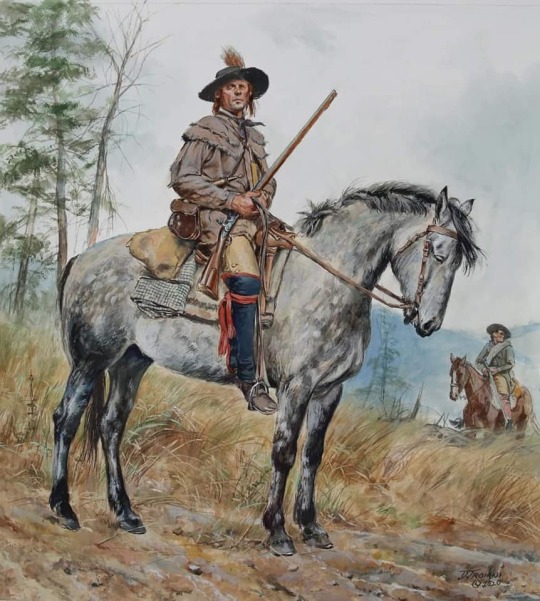
Busting “Reenactorisms” Part II, Day 2
Loyalists on the Southern Frontier & Frontier material culture
Thanks to Will C (Carolinas Militia Company and the Interpretive Ranger for the Overmountain Victory National Historic Trail) for today’s post
Q1. What were some of the reasons people along the Frontier would remain Loyal to the king?
A1. Frontier and Backcountry Loyalism is fascinating because it rarely followed any clear divides. Some whole settlements would band together; but you also had settlements torn apart. Sometimes factionalism would span various cultures and ethnicities for both sides, though religion tended to be more likely to presume someone’s loyalty. Reading through Whig pension applications you’ll see many men who state they became directly involved in the fighting due to first being attacked or harassed, and you have to believe that the same was true for Tories even though we don’t have the same volume of personal accounts. Those personal reasons ignited deep hatred that would last, in some cases, even after the war ended. You have some accounts that talk about changing sides over the course of the war; this was driven by wanting to join whoever the “big dog” was at the time for personal protection, but also there were some who split with their political party due to personal attacks.
One factor that encouraged frontier Loyalism was the backcountry distrust of lowcountry elites, who were usually the loudest voices calling for the rebellion in the south. While the wealthy in Charlestown and Savannah railed against Parliament for “taxation without representation” and the laws keeping them from buying millions of acres of Indian land west of the mountains, you meanwhile had frontier Tories who weren’t represented in their own Colonial Assemblies, and were mostly undefended and cheated by those same coastal power-players. You had many backcountry settlers who saw the British empire as the protector of a safe and prosperous future, not their lowcountry neighbors. This loyal group also included recent immigrants from across the Atlantic and those who viewed the British as the main reason there was peace (usually) with the local Cherokee and Creek Nations. While the coastal elite felt they were getting Parliament’s boots to their face, they were the ones stepping all over the backcountry folks. When it came time to side with Britain or the wealthy “Rice Kings” and merchants of the lowcountry, many frontier and backcountry Tories felt safer with their king.
Q2. Who was Thomas Burnfoot Brown? What sort of impact did he have on the southern theater of the war?
A2. Oh man, Brown is one of my favorite southern Loyalists to study. He was a 24 year old northern Brit whose wealthy father helped him start his own town along the Georgia/South Carolina border with indentured servants from Scotland. Thomas was confronted and assaulted on his front porch by an armed mob of Sons of Liberty when he refused to join their movement. He was brutally beaten and tortured before a friend helped get him to safety in South Carolina: his skull fractured with a blow from a rifle barrel (which gave him migraines for the rest of his life), he was partially scalped, and his legs covered in melted pine tar and burned by torches until he lost two toes and was incapable of walking for 6 months. Hence the Whigs nicknaming him “Burnfoot Brown.” He ended up losing all of his land and property in Georgia, and became one of the most aggressive Loyalist leaders in the southern colonies.He helped rally Loyalist supporters in 1775 South Carolina, was forced to flee to Florida, and began raising a regiment of refugees in 1776. His “East Florida Rangers” were the boogeymen to the Whigs on the Florida/Georgia border, from their formation in 1776 until the large British push back into South Carolina in 1780. Brown and his men then made his headquarters in forts in and around Augusta, Georgia until being forced to surrender the post and retreat to the British army along the coast in the summer of 1781.Brown was also one of the most aggressive Superintendents of Indian Affairsseen in the Southern Department. He was a major advocate for involvement of the Cherokee, Creek, Chickasaw, and Choctaw Nations against the Whigs, and was one of the architects of the “three-pronged Southern Strategy” that utilized the Indian Nations as one of the main ways to attack the frontier. Once he was appointed to the position in 1779, he and his deputies traveled from the Florida coast to the Mississippi River trying to convince the Indian Nations to take up arms with the British. Even in 1783, as the British had lost the war and Brown was preparing to evacuate Florida for the Bahamas, he urged the Creek/Mvskoge Nation to continue opposing the Whigs anyway they could.
Q3. There are a number of accounts that detail the rather brutal battles fought in the south between Whigs (Americans) and Loyalists. What made the Civil War in the Southern theater seem extra personal?
A3. The War of Independence in the southern colonies was the newest issuedraped over decades of conflicts and rivalries. There had been the Regulator War in North Carolina, and the entirely different Regulator War in South Carolina, between groups of settlers and their governors. You had competition between immigrants from Virginia, Pennsylvania, Ireland, Scotland, etc trying to claim the best frontier land for themselves and their families. This created a very distrusting environment where different communities viewed themselves as competitors with the community or church congregation on the next river over. These were rough, distrustful, violent people who were willing to fight for what they had built and knew they had to solve their own problems one way or another.
On top of this framework of divides and old wounds you now have the Revolution. When one leading person or community joined the Whigs, their old enemies may join the Tories just because they hate their old enemy. We see evidence of this from the Snow Campaign of 1775 when lists of “potential enemies” are arrested and described using terms from the SC Regulator War of the 1760s. Whig use of violent terror-tactics against Tories early in the war created resentment and anger that built and stewed until the British invaded the south and presented the opportunity for the Tories to take revenge. Retaliatory attacks in turn spawned reasons for more retaliation, which caused more retaliation, and on and on. Generals who arrived from other regions of the colonies were horrified at the amount of bloodshed and violence so calmly exercised; the violence simply snowballed. Add into this some enterprising individuals who took advantage of the chaos to loot and plunder the “enemy” simply to gain wealth. I’ve seen one petition from a Whig community in South Carolina that was being so regularly raided and plundered by Whigs from the frontier that they wrote to the Continental generals asking for relief.The mounted militias of the backcountry were toughened fighters that filled a crucial role in both armies, such as foragers, light cavalry, and a much-needed temporary boost in numbers, but they were partisans with personal feuds and violent agendas seeking to avenge a long history of abuses.
Q4. Many reenanctors portray Frontiersmen or “Over the Mountainmen” as scruffy and fully bearded individuals, dressed head to toe in animal hides. In your opinion is this a fair portrayal of the people who lived on the Frontier?
A4. I think often when reenactors want to portray a “frontiersman,” they don’t realize the huge mess of information, legends, and misconceptions that they are stepping into. If you’re wanting to portray a frontiersman from the American Revolution, an important place to start is thinking about what do you mean by the term “frontiersman?” I dare to reckon that nobody in the 18th century would have described themselves as such. Are you wanting to portray a hunter? Period accounts and store ledgers don’t show men setting off “mountain man style” for years on end to hunt and trap, but short (usually for one season or less) hunting trips in well-organized and supplied parties. They then returned to the settlements to sell their harvested animal hides for new clothes and whatever they will need until the next hunt. Are you wanting to portray a frontier settler? Primary sources show us the common pattern of groups of men first setting off down a trail or river, later followed by families and whole communities, all travelling to a new location where they can establish a settlement and grow crops mutually supporting each other. Even the most isolated regions were making trading trips, sometimes to large ports like New Orleans or Charleston, other times to intermediary trading towns like Bethabara, NC, Camden, SC, or Charlottesville, VA. The people of the 18 th century frontier were not removed enough from their previous homes and cultures to abandon the concepts of proper personal appearance and hygiene, but did make slight adjustments to their lifestyles to better fit their new environment. One adjustment was in clothing, using what some referred to as “Indian dress” of moccasins and leggings when on rough trips, and wearing “hunting shirts” to protect their more expensive clothes beneath. Concepts of fashion were adjusted for durability and comfort, but never abandoned. We cannot think of a frontiersman as a woods-hermit who wants everyone to leave him alone and rejects every aspect of popular culture. Some of these peopledid exist in the 18 th century, but they were recorded and described as crazy woods-hermits. Your average frontiersman wanted to improve the life of himself, his family, and his community, and that meant going to where land was most available for farming, and game most plentiful for hunting and trade. The usual frontiersman wanted to build his own little piece of society on the frontier: maintain an economy of trade, be involved in home-government, and be respectable in both appearance and reputation.
Q5. How did southern Native Americans impact the war efforts in the south, particularly on the frontier?
A5. The Indian Nations of the southeast were a critical element of the AmericanRevolution. Indian Nations had always been viewed by the European powers as potential allies or enemies in warfare, and when this new war erupted between Britain and her colonies, both sides looked again to the Indian Nations. As early as 1775 there were already British and American agents courting the Cherokee, Creek, and Shawnee, each trying to convince the Indian Nations that they were the strongest dog in the fight and were offering the best trade opportunities. The traders who worked and usually lived in Indian towns were recruited by both sides to be agents, their influence being crucial in swaying the opinion of a particular Indian town or region. Most of the Indian Nations in the southeast didnot have a single leader or representative to decide matters for the entire nation. This meant that a single nation could be split in their opinions about trade and war, even having different alliances from one town to the next. This created a complex system of diplomacy and relationships that confused and frustrated military commanders on both sides, and required a personal grass-roots style of approach. Militarily, Indian involvement was viewed as the “nuclear option” by British Indian Superintendent in the southeast John Stuart. Stuart knew the massive devastation that would result from a war between the Indian Nations and the colonists, especially among the Cherokee Nation. Despite Stuart’s caution, Cherokee warriors were persuaded of the necessity of war by delegations from other Indian Nations and Loyalist refugees. The fear caused by the Cherokee attacks in the summer of 1776 forced some Loyalists to lay politics aside and join the Patriot army to defend their settlements, convinced that no white person would be spared. The resulting Whig retaliatory expeditions destroyed the Cherokee Nation’s ability to wage war on a large scale, but small groups of warriors continued fighting throughout the war and afterwards, especially the faction lead by Dragging Canoe. This would end up being the only massive offensive campaign waged by a southeastern Indian Nation into the interior of the “13 original colonies,” with the rest of the war and other nations relying on small-unit actions and raids.British policy was slow to view the Indian Nations as significant powers to use effectively against the Americans, predominantly seeing them as a distracting element to draw the frontier Whigs away from fighting the British regulars. Many Loyalists however viewed the Indians as a major military resource, and Loyalist refugees taking shelter in the towns of the Cherokee or Creek Nations tried to convince the warriors to go against the Whigs. Integrated groups of Indian warriors and white Loyalists serving as officers or guides was a common occurrence in the frontier warfare that stretched from the Great Lakes toFlorida. These Loyalists are often infamous in legends and folklore of the 19 th and early 20 th centuries because they were remembered as not only fighting against their nation as Tories, but depicted as betraying their race by siding with the Indian Nations.The British control of trade in the years leading up to the American Revolution and the dominance Britain had shown by defeating France in the French & Indian War convinced most Indian Nations in the southeast that she was the one who would come out on top in the current conflict, with only the Catawba Nation from the region of Charlotte, North Carolina siding with the Whigs. From the beginning of hostilities the Indian alliances were viewed as a potential military resource, but those who had witnessed Indian Wars before both respected and feared the devastation that usually accompanied frontier fighting. The more desperate the Loyalists and British became, the more they courted active involvement of Indian warriors. The further west you look, the smaller the white armies are and the more exponentially important Indian involvement becomes. From Creek raiding parties in coastal Georgia, to Cherokee attacks in the western Carolinas, to Shawnee laying siege to entire forts in Kentucky, and Choctaw and Chickasaw attacking Spanish travel on the Mississippi, the role of the southeastern Indian Nations was a critical element to those living and fighting in those places.
#all my favorite american revolution in the south facts#in one handy post!#american history#southern loyalism#native history
44 notes
·
View notes